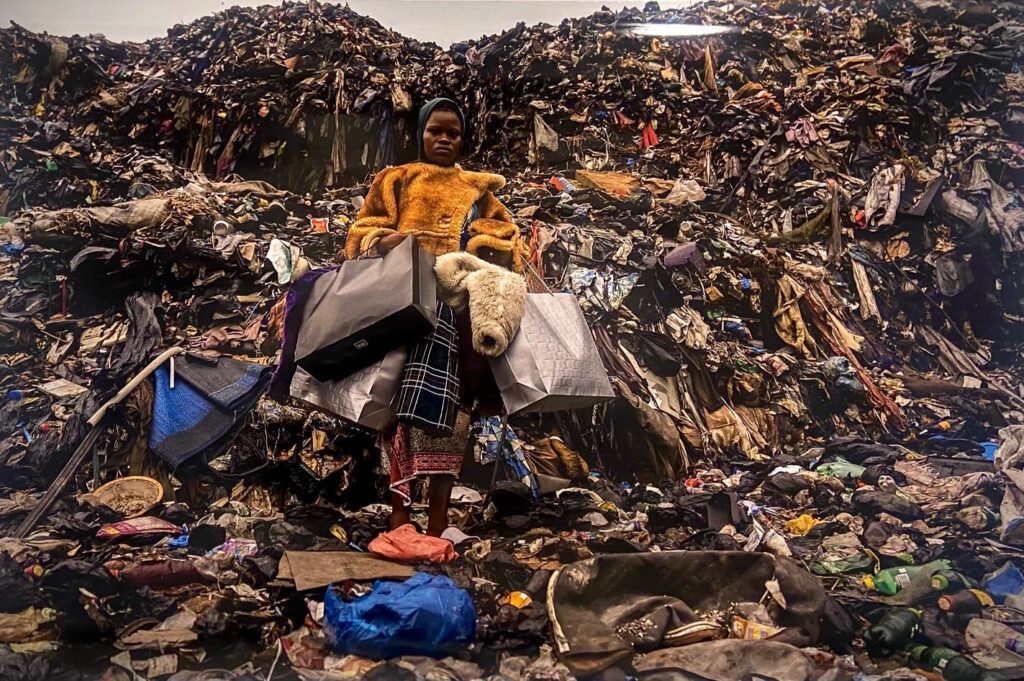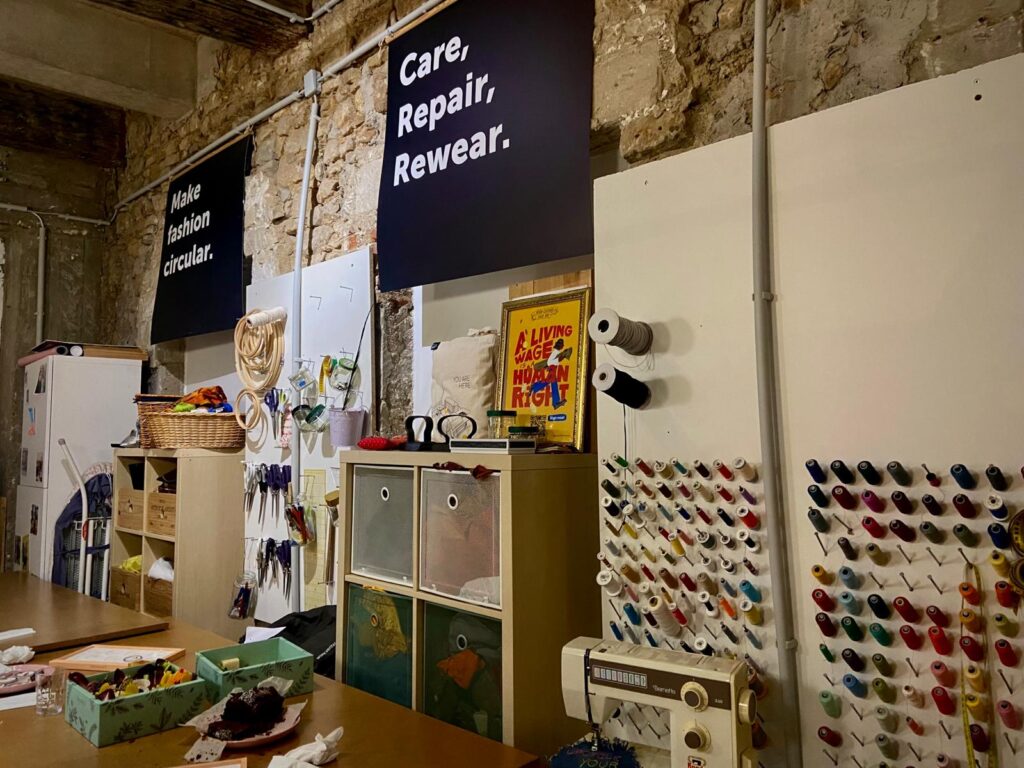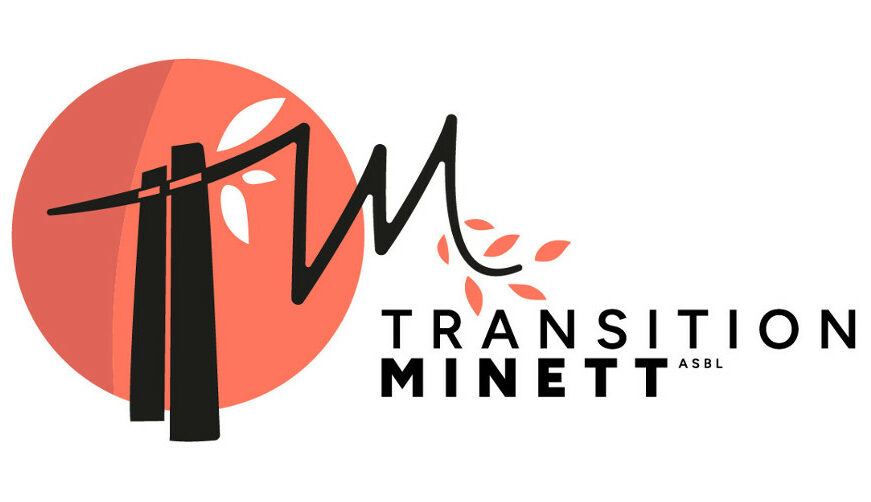This is the first of a short series of articles on ecology in Luxembourg. Over the next few weeks until the end of June, I’ll be taking you on a journey of discovery on a variety of topics, starting with fast fashion, and then moving on to food, mobility, and more!
To find out more about the problem, just pass by “rue de l’Alzette” in Esch
In Luxembourg alone, the average person throws away 12 kilos of clothes a year, of which only 1% is recycled1. So where does the rest go?
This is the question that the exhibition “The Revival“, on display until May 11th in the former Sephora building (69 rue de l’Alzette) in Esch, seeks to answer.
Observation, reflection, and hope for a change: that’s the aim of this interactive exhibition, which shows the impact of fast fashion on other countries, such as Ghana.
As we all know, most of the clothes we buy at low prices from fast fashion chains are not produced ethically, either from a social/human point of view (such as the Rana Plaza accident, considered one of the biggest disasters in the fashion world) or from an environmental point of view (pollution and waste of vast water resources).

Photo of the revival exhibition. Ghana is one of the many landfill sites in the country where over-consumption is not generated directly, and discarded clothes are imported from global “North” countries.
Our most powerful weapon: our conscience
Although much progress has been made in recent years to regulate the impact of the fashion industry, there is still a long way to go. So how can we help?
We can start by committing to the path of sobriety, which is necessary if we want to create a positive impact and change the fashion industry.
However, the concepts of ‘sobriety’ and ‘minimalism’, which are in direct contrast to the consumerist society we live in, often have a negative connotation. We associate ‘owning less’ with a form of failure or social status that we reject. On the contrary, it could be an opportunity to free our minds, lighten our budgets, and save precious time.
The most effective solution is certainly to change our shopping habits and the way we dress. That’s why we need to ask ourselves some essential questions before we purchase an article: “Why am I buying it? Is it really useful? Will I still be wearing it in a few years? Is it made from sustainable materials?
One way to solve the problem: create a capsule wardrobe!

To learn how to shop differently, I went to Lët’z Refashion by Caritas in Luxembourg City, a boutique-atelier dedicated to circular fashion. As part of the “Rethink your clothes” campaign, I took part in the “How to create your own capsule wardrobe” workshop with Adélaïde Dubucq, image consultant and founder of Relooking and Queen.
The event was instructive in many ways: I learned that, on average, each of us has around 70% of unwanted clothes in our wardrobe that end up being thrown away. To avoid this issue, Adélaïde Dubucq explained the importance of creating a ‘capsule wardrobe’, a wardrobe made up of a few essential items that can be worn for any occasion. The keywords are comfort, minimalism, creativity, and style. We only need 40 pieces in our closet – between clothes and accessories – that are easily interchangeable and combinable with each other. They should mostly be in neutral basic colors, but let’s not forget about our favorite unique and colorful pieces! This number, which may seem relatively small, is ideal for avoiding the “paradox of choice” that we face every day when we have to decide what to wear among the thousands of different items we possess.

Photo: spaces in the Letz’ Refashion boutique
Following trends and constantly updating our wardrobes doesn’t necessarily mean dressing fashionably or with style. Finding your style is essential if you don’t want to fall into the trap of “wanting to own everything you see in the shop window or online”.
So what do you do with the clothes you don’t need? Here are some ideas:
Create a stock, pack them up, and physically give them to organizations like Caritas, or sell them on platforms like Vinted or Facebook Market, sell them at flea markets, swap them at swap parties, or simply give them to friends and family or people in need.
On this occasion, I learned that even though it’s hard to make a change, it’s always less complicated than you think. And our smallest actions can have a huge impact, not just on our own lives, but on the lives of others…
I look forward to seeing you back here on the Transition Minett website to follow me on the next adventure and discover more about the ecological transition in Luxembourg!
To go even further:
- Sustainable alternatives to reduce the environmental impact of fashion: https://www.sustainyourstyle.org/en/reducing-our-impact
- Caritas Luxembourg offers several workshops to help you get directly involved:https://www.thechangestartswithyou.lu/fr/letz-refashion-workshops
- To consult the map of second-hand clothes in Luxembourg:https://www.transition-minett.lu/carte-2nd-hand-clothes-luxembourg-la-mode-2e-main-cest-mieux-pour-la-planete-et-le-porte-monnaie/
- To take part in a RepairCafe Couture :https://www.repaircafe.lu/#events
- source: Exhibition “The Revival” by caritas Luxembourg ↩︎
